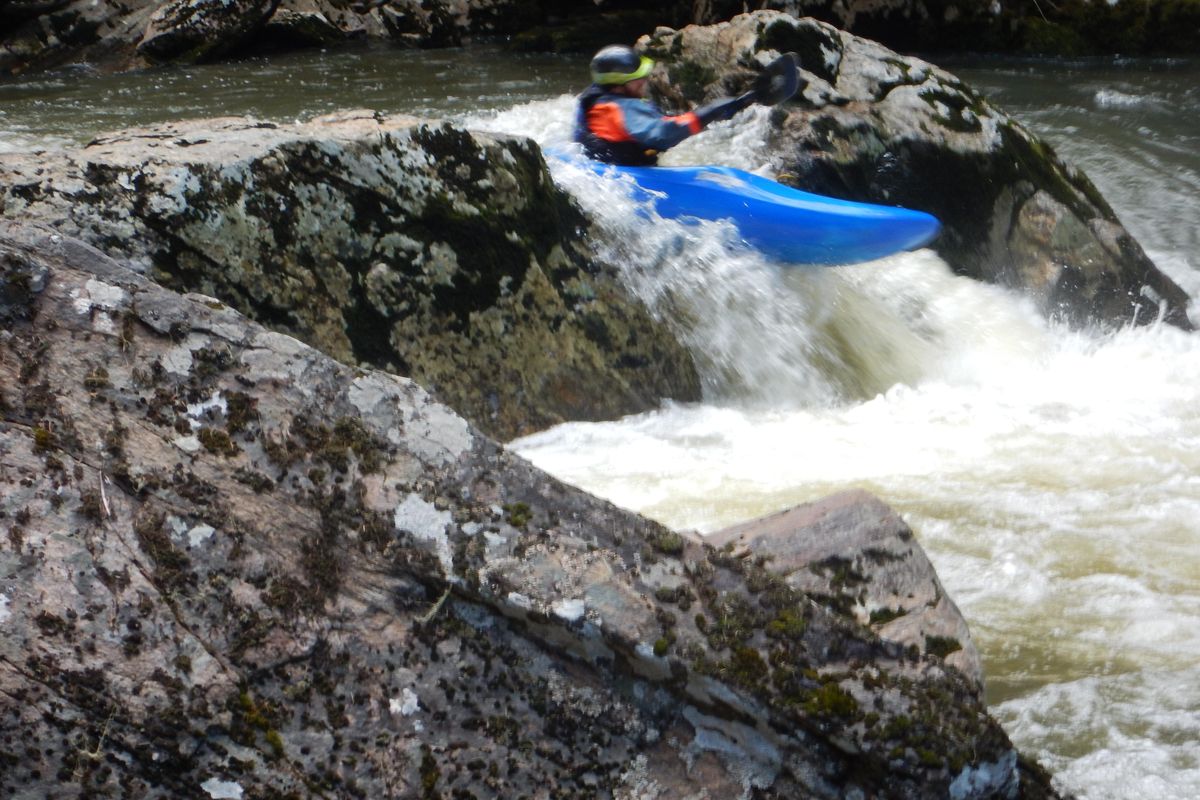The Potlatch River: a hidden gem on the edge of the Palouse

Most folks don’t know it exists, but the Potlatch River east of Moscow carves through a canyon filled with beauty, solitude, and exceptional whitewater kayaking.
And it’s convenient: The put-in is a mere 30 miles from Moscow.
“It’s a hidden gem,” Pullman kayaker Guy Palmer said. “It’s in a spectacular canyon that’s 1,000 feet deep, right on the edge of the Palouse.
“By the time you finish with the take-out, you’re practically in a wheat field. It’s the most incongruous place for a whitewater river of that quality.”
Steep, deep and extremely committing, the Potlatch Canyon is a solid Class IV run that edges toward a Class V blur at high flows. Because it is so confined, minor fluctuations in flow have major effects on difficulty.
Some friends and I were there in late April and early May, weaving our way through a beautiful canyon filled with gnarled cedar trees draped in wispy moss.
We launched near the Boulder Campground, which is administered by the U.S. Forest Service, about 2 miles from the tiny hamlet of Helmer. The river was low the first time we went, and lower a week later, so we bumped and bounced in shallow water for a mile or two before the river necked down, the canyon closed in, and we entered the belly of the beast.
It’s gorgeous down there, like the Land that Time Forgot, with little evidence of human activity. It’s also a place to pay close attention, because the intensity of the river picks up dramatically.
The Potlatch Canyon is an edgy place, with dire consequences for minor mistakes. Paddlers run the bigger drops one at a time, while their pals lurk in eddies, ready to offer help. At times, they get out of their boats to stand on strategic boulders, rescue ropes in hand.
The stream is littered with large rocks, forcing paddlers to make continual, on-the-fly decisions about which line to follow.
Left? Or Right?
Eddy out and take a look? Or follow the leader, and hope the leader gets it right?

Some of the drops are straightforward ledges, requiring paddlers to pick their spot, then power over the lip with plenty of momentum. A poorly executed “boof,” as the maneuver is known, results in the paddler being sucked back into a frothy maelstrom below the ledge. As you can imagine, that’s a bad place to end up.
Other rapids are longer, rock-dodging performances that demand crisp paddle skills and clean execution. Put the boat on edge, corkscrew left past the entry rock, then upstream ferry to catch the eddy on the right, then peel out into the most powerful part of the rapid, try to stay right and – oh no! –avoid the snapped off log on the left.
Whew, that was close.
The difficulties culminate at a place called Coleman Falls, where the river plunges through a jumble of boulders, gathering intensity, before a final, complicated ledge with several distinct exit slots.
I’ve never run Coleman Falls, and I’ve never seen anyone run Coleman Falls, but there are people who do it. In our case, we paddled the entrance – which requires a 4-foot boof just upstream of the serious difficulties. From there, we portaged the worst of the falls on river left.
After Coleman Falls, the river smashes through a series of tight, tricky rapids with names such as Double Drop and The Guillotine. (In case you’re wondering, the Guillotine often sports a horizontally jammed tree limb just above the water; proceed with caution.)
For those who keep their heads, the Guillotine marks the end of the canyon’s difficult whitewater.
As if to signify the end of aquatic hostilities, there’s a sturdy rope swing over the run-out pool at the bottom of the rapid.
Roughly 7 miles in length, the Potlatch Canyon section ends a little more than a mile past the rope swing.
At that point, paddlers can either continue on easier Class III water to a roadside take-out 9 miles downstream, or they can step ashore at the bottom of a two-track trail and embark on the Take-Out From Hell.
The climb out of the canyon is 1.6 miles long, with roughly 800-1,000 vertical feet of gain. That’s a pretty stout hill for day hikers with a picnic lunch, but it’s a soul battering prospect for soggy kayakers with heavy boats and slippery neoprene booties. Even Sisyphus wouldn’t trade places with paddlers trudging out of Potlatch Canyon.
If you can’t convince a friend to fetch you with an ATV, then the best strategy is to pretend you’re the star of a prison-escape movie. Just drag your boat like a ball and chain, step after miserable step. The good news about trudging out of Potlatch Canyon is it affords plenty of time to mentally review the day’s highlight reel.
If your skills are equal to Class IV whitewater in a remote, committing canyon, then the Potlatch River is an early-season jewel that commands attention.